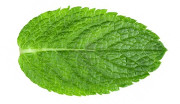As seen in the February 2011 issue of Dog World magazine.
Most of us would agree that ear infections in our dogs are just all too common. It’s the rare dog that gets only one ear infection and oftentimes the problem crops up again within months. The good news is that once the basis for infection is understood and handled the problem can be solved.
Healthy Harmony
In a healthy ear canal, yeast and bacteria live in delicate balance.When there’s excess wax, oil or moisture in the canal the microclimate is altered and infections occur. A yeast with the strange name of Malassezia pachydermatitis takes full advantage of any waxy, oily or moist conditions, disrupting the balance while creating inflammation and discomfort.
You’ll most likely notice more head shaking and scratching along with general itchiness and discomfort. Scaling, crusting, redness and irritation within the ear, fur loss and perhaps a grey peppery speckled skin under the ear-flap may follow. This yeast can also infect other moist areas, such as the groin or underarms. In very severe cases, the skin can resemble grey elephant skin.
[Sidebar: Place a cotton ball in your dog’s ear. If you find a brown, waxy substance with a sweet, musty, yeasty odor there’s a good chance that your dog has an overgrowth of Malassezia. Your veterinarian can confirm this with a simple staining procedure.]
A Long Way to the Bottom
We can easily view only a fraction of a dog’s ear canal as it’s made up two canals that sit at an angle to each other; the vertical and horizontal canal. Therefore, infection is often undetected or mistaken for dirty ears or waxy buildup. Infections are typically treated for a week or two but the very bottom of the ear canal often remains infected, far away from prying eyes . So the infection that ‘came back’ never actually ‘went away’!
Ear infections are typically treated with a mix of antibiotic, antifungal and steroid combinations. This protocol treats the superficial symptoms in the outermost area of the canal but never addresses those conditions in the ear that supported the imbalance in the first place. Months pass and bacteria take the lead. Finally, resistant bacteria become the front runners.
Some Basic Solutions
In most cases, getting down to the basics to handle the problem isn’t so difficult. It’s very important to be consistent and diligent. Additionally, while any dog can get an ear infection, certain breeds are more susceptible than others. Routine swimming may also contribute by adding excess moisture.
If your pup has simple Malassezia overgrowth this easy to prepare formula can be very helpful. Administer twice a day for a week, then once a day for two weeks, followed by twice a week for one or two months.
4 ounces of either: rubbing alcohol or Tris EDTA
1 Tablespoon of Boric acid powder
4 drops of Gentian Violet 1% solution
All ingredients with the exception of Tris EDTA(on the web) can be purchased at a local pharmacy.
Mix all of these ingredients together and shake well. Place in a dropper bottle. Make sure your dog’s ears are not inflamed or ulcerated before you use this product. Use Tris EDTA if your dog’s ears are generally sensitive. If your dog exhibits pain, or great discomfort after application discontinue use immediately Dr. Roses Skin Treatment Salve www.drrosesremedies.com works wonderfully for irritated ear flaps.
Make sure you consult with your veterinarian and don’t hesitate to use conventional ear treatments when necessary. Painful bacterial infections often require additional medications and veterinary supervison.
After the Storm
After the infection clears up, dogs prone to ear problems should have their ears cleaned with an ear cleaner to retain balance and remove debris. Ideally any ear cleaner should limit the growth of yeast and bacteria in addition to removing excesss wax and oils. A natural product, DermaPet Malacetic Otic Ear Cleanser, contains an acetic acid (vinegar) and boric acid solution which has proven effective against Malassezia and certain bacteria. Massage into the ear and leave for 5 minutes and wipe out with a cotton ball. This helps correct the conditions that led to the imbalance and keep new infections at bay.
Q and A
Dear Dr. Khalsa,
Our Maggie is a wonderful 5 year old Basset Hound. At two years old she began furiously scratching both her ears. No sooner had we finished treating her ears then they were in trouble again. At first, Maggie had brown stuff in her ears but after a few years it turned into a nasty smelling green stuff. Maggie is the sweetest dog but she now hates having her ears touched and she needs unusual antibiotics because she now has antibiotic resistant bacteria. We love her so much and we take one step ahead and two back. Is there a way we can fix this never-ending problem? We’re scared that we’ve used up all our options.
Joyce or JG
Maggie’s story is not an unusual one and Basset Hounds are one of the breeds prone to chronic ear infections.
The first thing we need to do is handle the resistant bacteria. A Chinese Herb, Huang Lian Jie Du Teapills (Huang Lian Ji Du Wan) by Mayway and sold in many Whole Foods Stores has proven very effective against resistant bacteria. I’ve often seen it work more effectively than antibiotics. Give Maggie 6-8 of the tiny herbal pills orally 3x day for one month. Your veterinarian can prescribe a topical ear medication to keep her comfortable during this time or you can try all natural Zymox Otic, available on the web. It contains 3 active enzymes that are both antibacterial and antifungal. The company also makes an ear cleaner to use with it.
I want to build up Maggie’s general health and immunity also. This is very important in both handling her present infection and in preventing future infections. Maggie should get 3 tablespoons of coconut oil twice a day. Coconuts contain Lauric acid, which has both antifungal and antibacterial properties. Clinically, I’ve found daily doses of Deserving Pets Vital Vitamins www.deservingpets.com extremely beneficial in handling chronic ear infections.
After the inflammation and infection subside begin to clean her ears once a day for a week and then twice a week, checking for any debris or infection. You can use the DermaPet ear cleanser mentioned above. Continue with daily Deserving Pets Vital Vitamins and coconut oil. Perhaps she’ll let you use a squishy hair tie to hold her ears above her head for an hour or so every day, allowing for more circulation and reducing moisture.
[Sidebar: Conditions conducive to yeast and bacterial growth can easily persist so creating a weekly routine to clean, balance and check your dog’s ears will truly help prevent chronic ear infections.]

 About Dr. Khalsa
About Dr. Khalsa